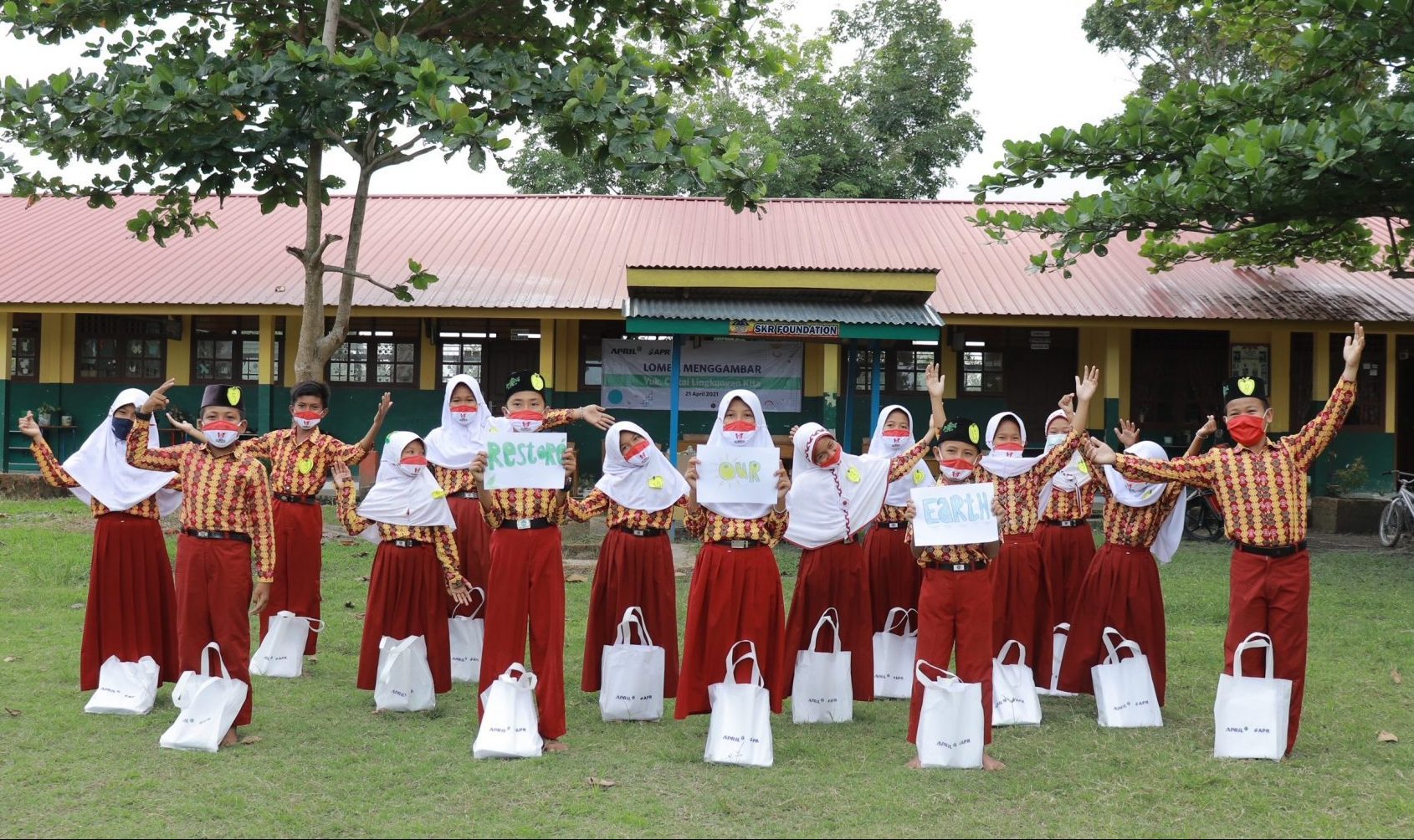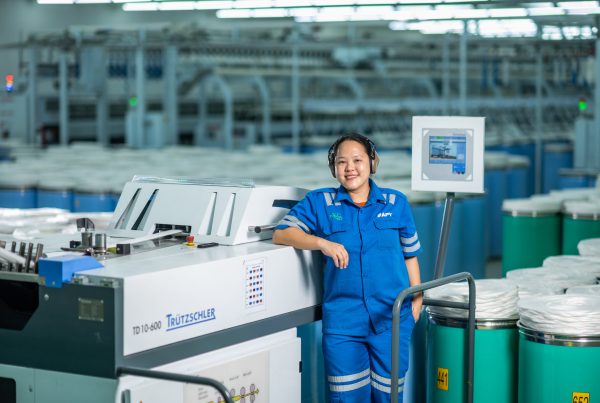Climate change and inequality is affecting every country on every continent and is already disrupting national economies and impacting lives. It’s a situation that has long been recognised by the United Nations and, with some aspects of the Sustainable Development Goals looking unattainable, they have called for a ‘Decade of Action’ in order to accelerate sustainable solutions to the world’s biggest challenges.
The theme of this year’s Earth Day is ‘restore our earth’ and this highlights that while we all want the world to go back to normal, that doesn’t mean we have to go back to business as usual.
The global climate and biodiversity breakdown demands an entirely new way of doing business, transitioning the world from its dependence on fossil-based resources towards a low-carbon economy and one that secures a new social licence to operate.
As the second highest polluter and the cause of 10 per cent of humanity’s carbon emissions, the fashion industry has a huge impact on the environment. If the fashion sector continues on its current trajectory, its share of the carbon budget could jump to 26 per cent by 2050. Coupled with about one garbage truck of clothes being sent to landfill every second, it is clear that the fashion industry needs to change.
As a producer of viscose rayon, a fibre sourced from wood cellulose, APR is focused on working with supply partners like APRIL Group on the careful management of plantations and active protection of conservation forest in the landscapes where we source our fibre. We also have a part to play in helping rethink the fashion industry and to help increase circularity.

Supporting production-protection of key landscapes
There is a lot of talk in sustainability circles around regeneration, an evolving concept that aims to restore the environment and encourage long-term sustainability.
Many of the principles of regeneration are in line with APR’s approach to sustainability, which builds on the strength of our integration with our supply partner APRIL Group to offer a unique approach to responsible plantation management and active forest conservation. As a group, we have committed to protect, conserve and restore an area of natural forest equivalent to our production area as part of a production-protection model.
To achieve this we use a ring plantation concept, where High Conservation Value (HCV) forest is protected from human encroachment by a buffer of plantation forest. As well as keeping HCV areas safe, this model also provides the economic activity to fund ecosystem restoration and forest protection.
As part of the work on transitioning to a regenerative approach, APR is also supporting Forum for the Future and Textile Exchange on the Man-made Cellulosic Fibre (MMCF) Vision 2030, which is a shared vision for building socio-economic resilience and regenerating our social and natural systems.
APR with its supply partner APRIL Group is focused on four objectives:
- Protecting biodiversity in the HCV areas within the forest concessions in our supply chain.
- Restoring and conserving natural forest equivalent in size to the managed forest plantations. In 2020, this was approximately 365,733 ha of natural and HCV forest in Indonesia, including Restorasi Ekosistem Riau (RER) a peat conservation forest with more than 150,000 ha of intact forest in the Kampar Peninsular.
- Delivering on a 10-year roadmap to net zero GHG emissions from land use, and embedding circularity in our operations, as well as enhancing social wellbeing and equality.
- Looking at the entire landscape, to including partnerships with local communities to encourage sustainable agriculture, female empowerment initiatives and poverty alleviation.
Rethinking fashion – the shift to circularity
In the US the average garment is worn just 40 times before it is discarded. And around 60 per cent of all fabrics used globally are synthetic fibres, like nylon and polyester, which are a form of plastic and do not biodegrade after being sent to landfill.
Biodegradable fibres like viscose rayon also offer huge potential because they return naturally to the environment after their useful life has ended. APR’s viscose for example is certified to biodegrade in both soil and water without affecting the environment.
So just changing the fabrics we use can reduce the environmental harm caused by fashion waste. But just changing the composition of the waste alone is not enough – we also need to reduce the total volume of waste that is being sent to landfills or incinerated.
The industry has to do more to solve the mountains of textile waste generated and explore how we can extract more value from it. At the moment only one per cent of textile waste is recycled into new garments, with most of the rest either entering landfill or being burnt.
APR and APRIL are committed to move away from the current linear business model of take-make-waste towards a circular system. We aim to treat our materials as though they are finite.
Unlike commonly recycled materials like cardboard and glass, recycling textiles is more complicated. Many fabrics are blended, meaning it’s made of more than one type of textile fibre, often a combination of cellulosic and synthetic. Colours need to be sorted and in some cases the dyes need to be removed. And many items of clothing come with accessories such as buttons and zippers attached, all of which need to be removed before the fibre can be recycled.
And before any of these problems can be tackled, unwanted clothing has first to be collected, sorted and send for processing. While pre-consumer waste from factories is relatively easy to gather, post-consumer waste – clothing thrown away by its owner – needs new systems and infrastructure in order to avoid being discarded along with regular household waste.
In many cases the technology to solve these problems exists only in the form of pilots and is not yet commercially scalable. In addition these technologies are mainly in Europe, not Asia. It’s one of the reasons that RGE has invested US$200 million over 10 years to help fast and linear fashion become more circular and sustainable.
This investment in research and development will help APR to achieve its goal of sourcing 20 per cent of its feedstock from alternative or recycled materials by 2030, as well as scaling circular solutions for the broader industry.
Ultimately APR and the wider industry are committed to reducing emissions and waste in support of the Paris Climate Agreement. But this has to be done holistically while also addressing UN Sustainable Development Goals.

By alleviating rural poverty and providing sustainable livelihoods for communities around our operations, while at the same time providing consumers with better and more sustainable options, we can ensure that we are all partners in restoring and protecting our earth.
Earth Day reminds us that businesses must work harder to create value for society and protection for the environment, to fulfil the most basic social contract, to leave the world a better place than we found it.

###






